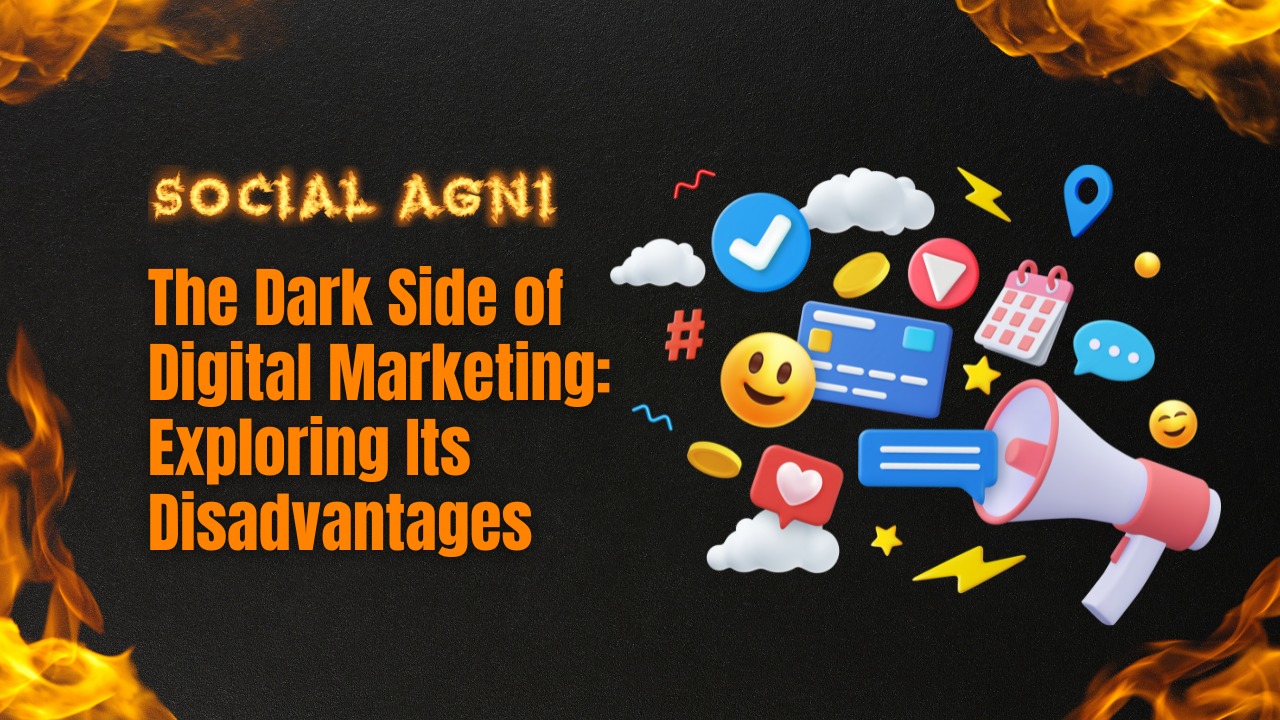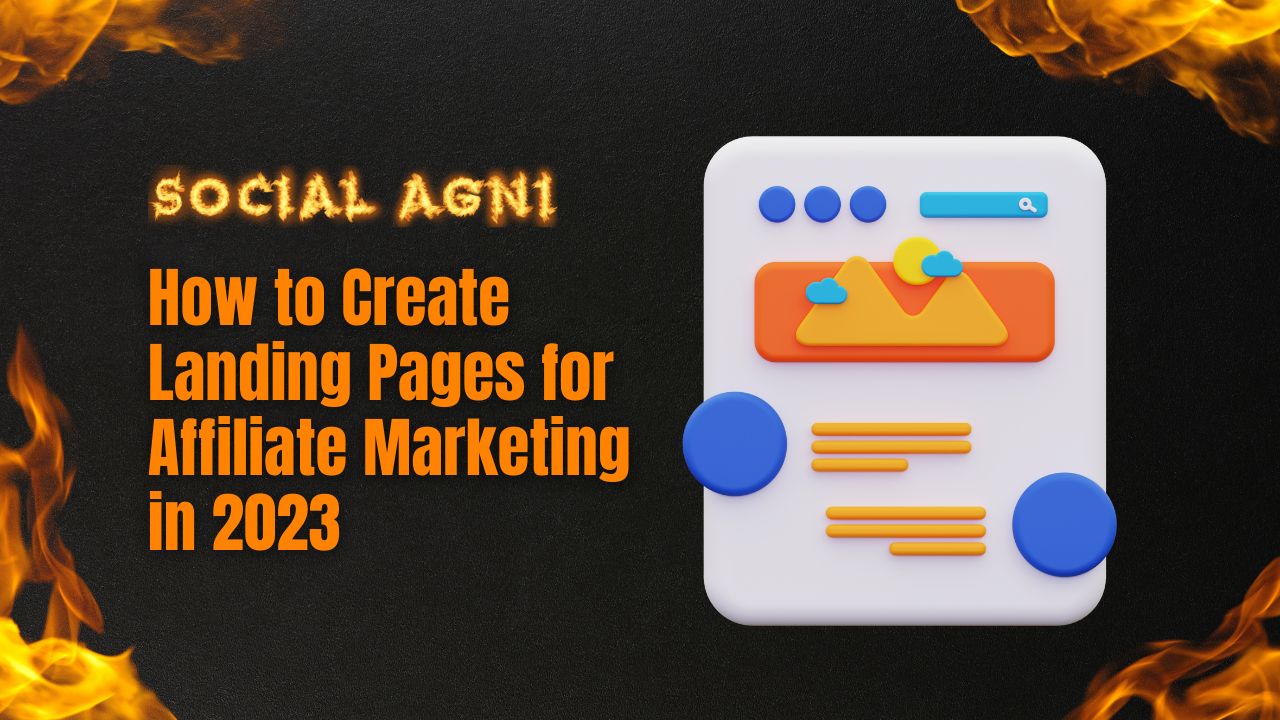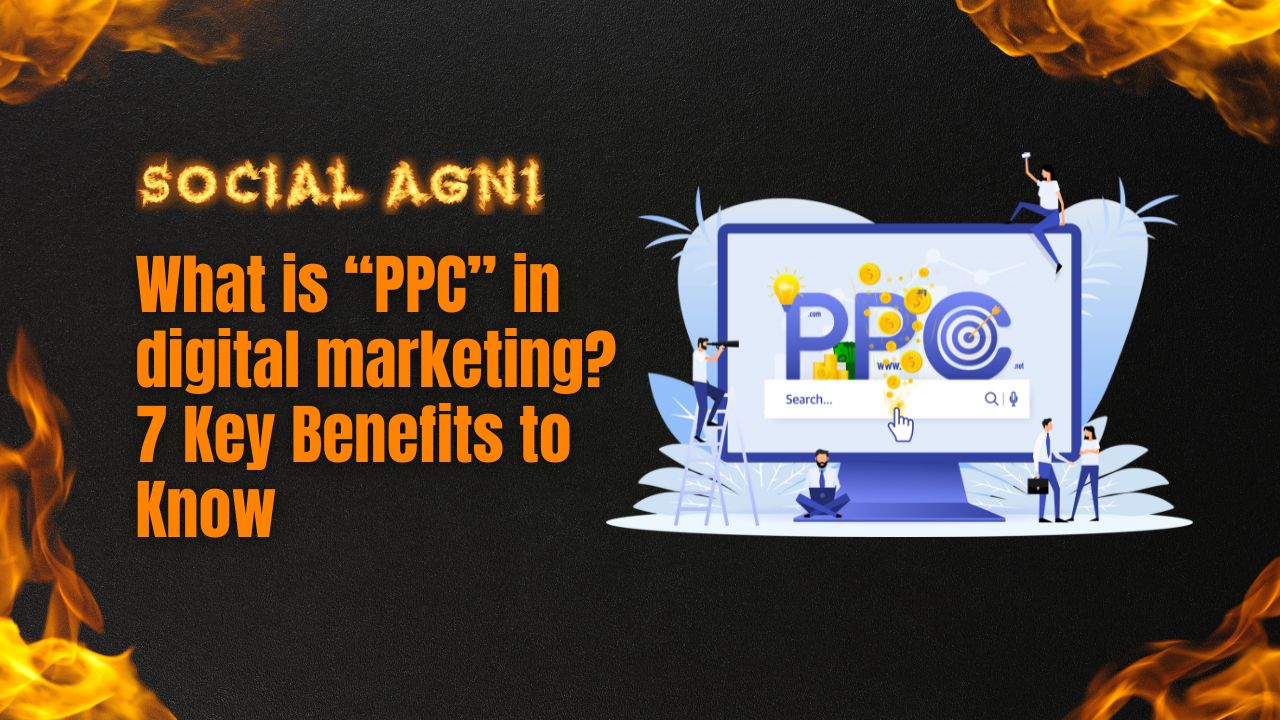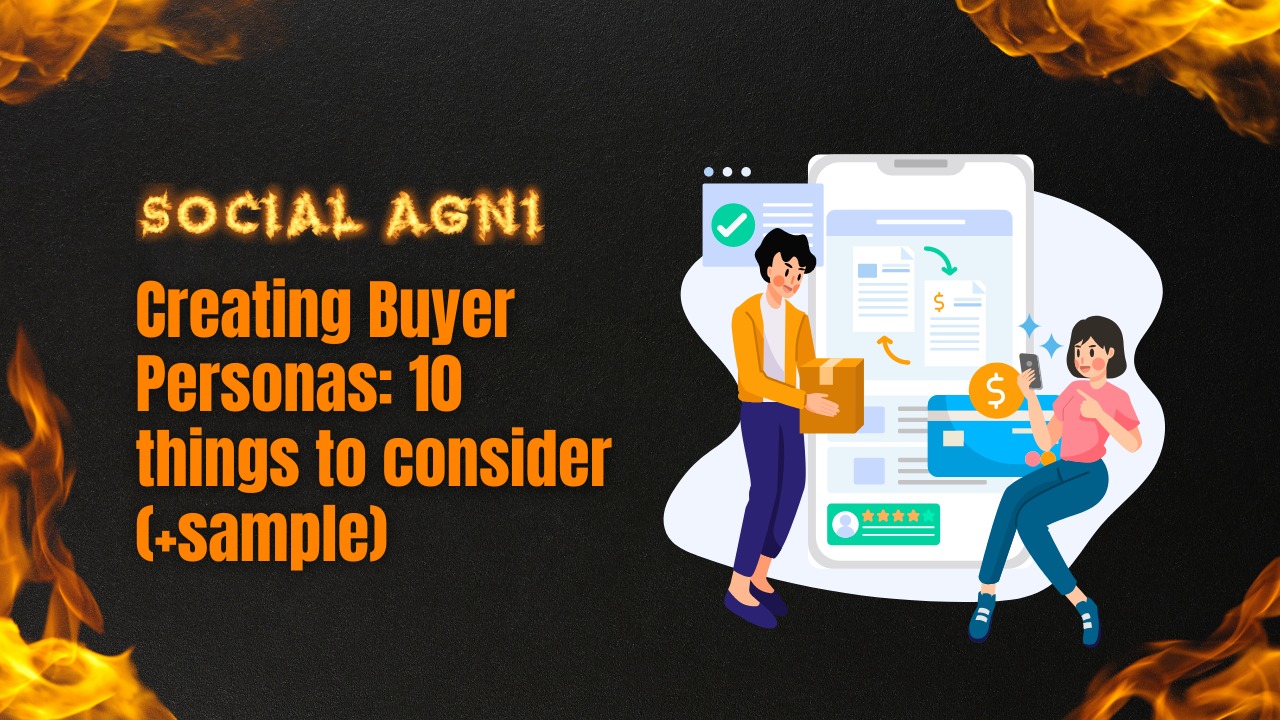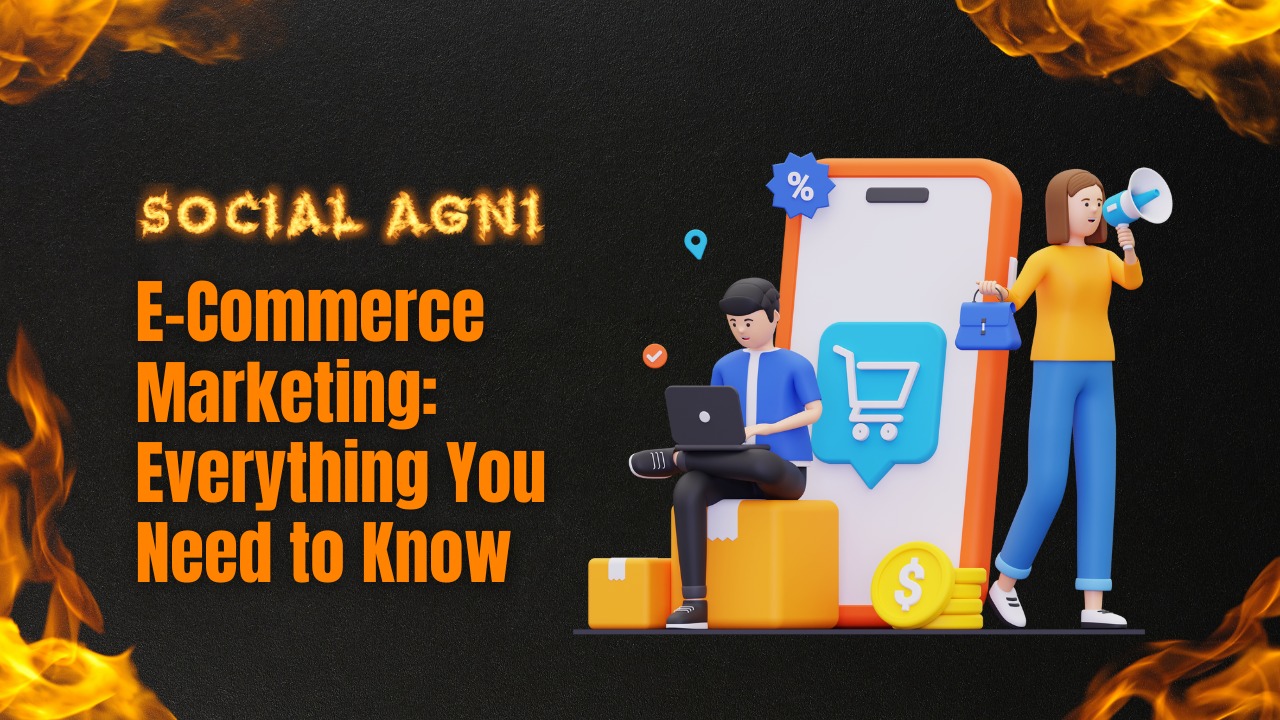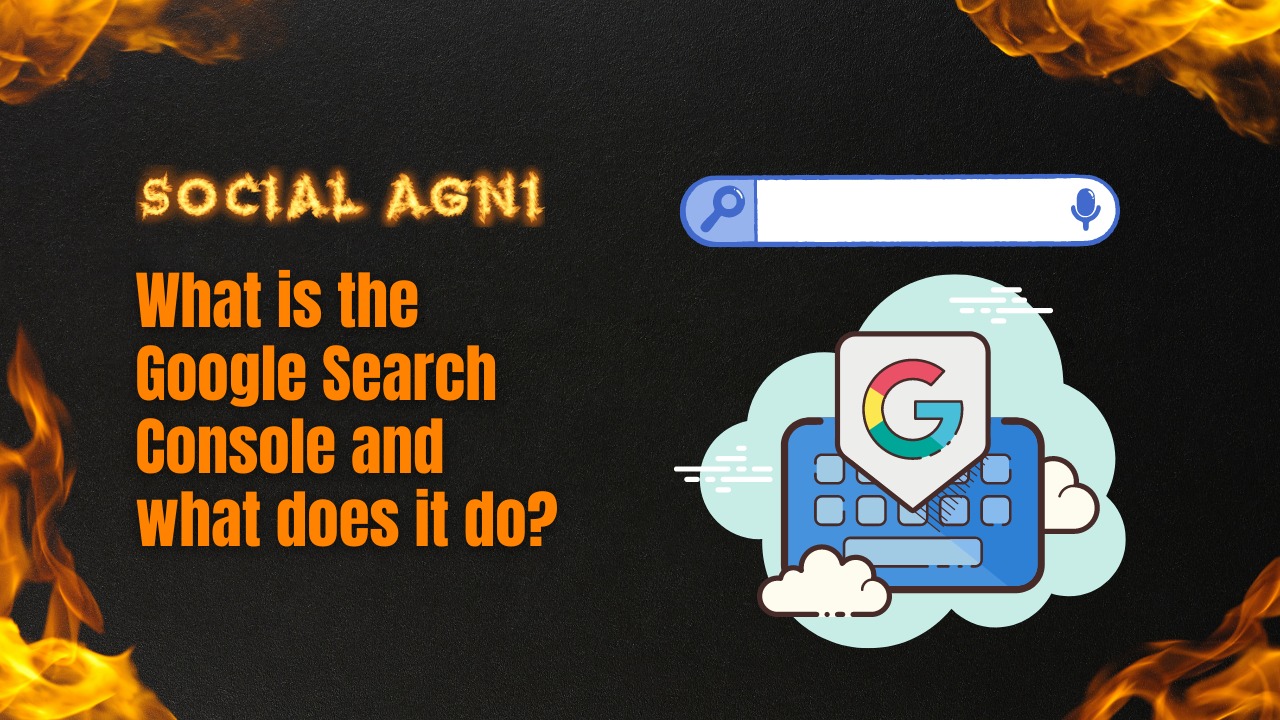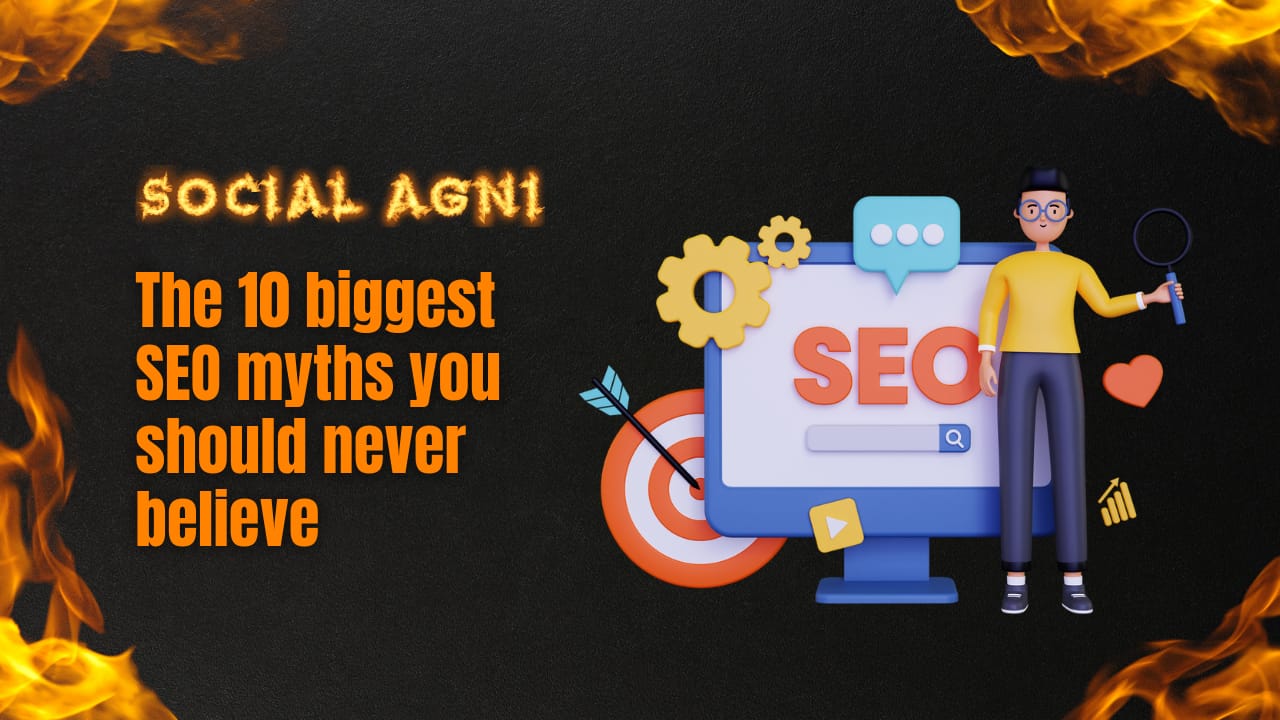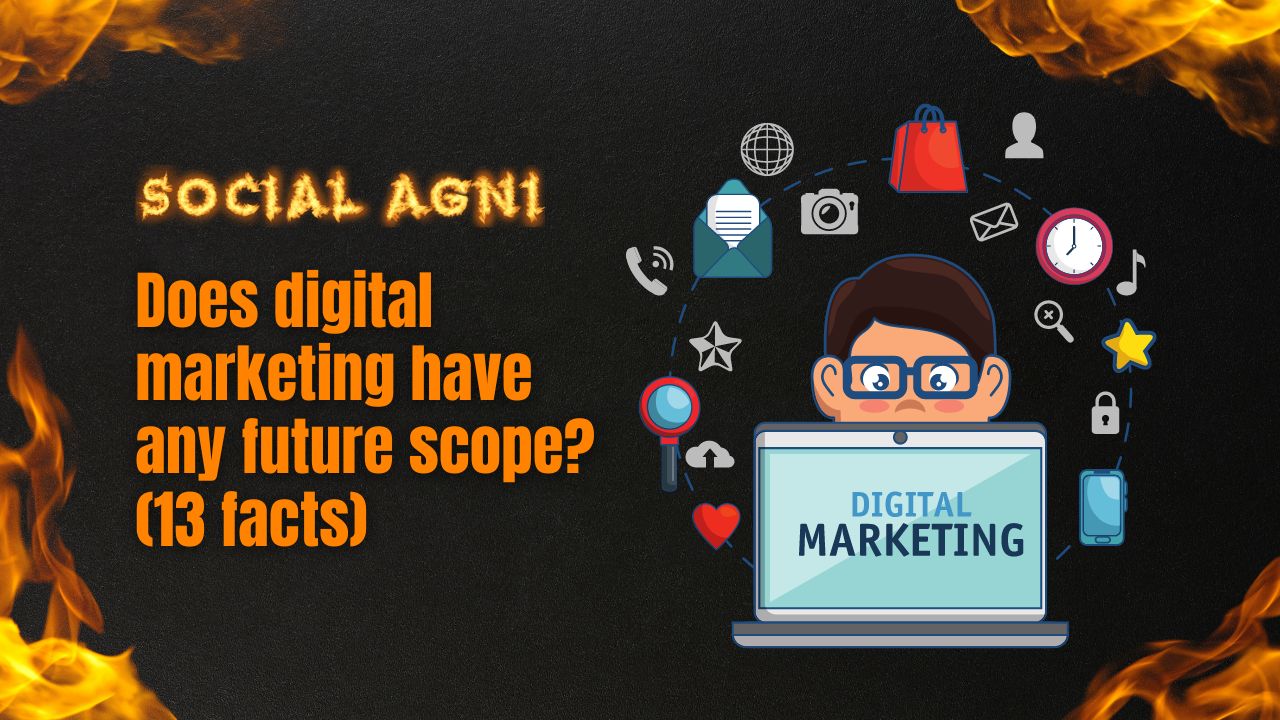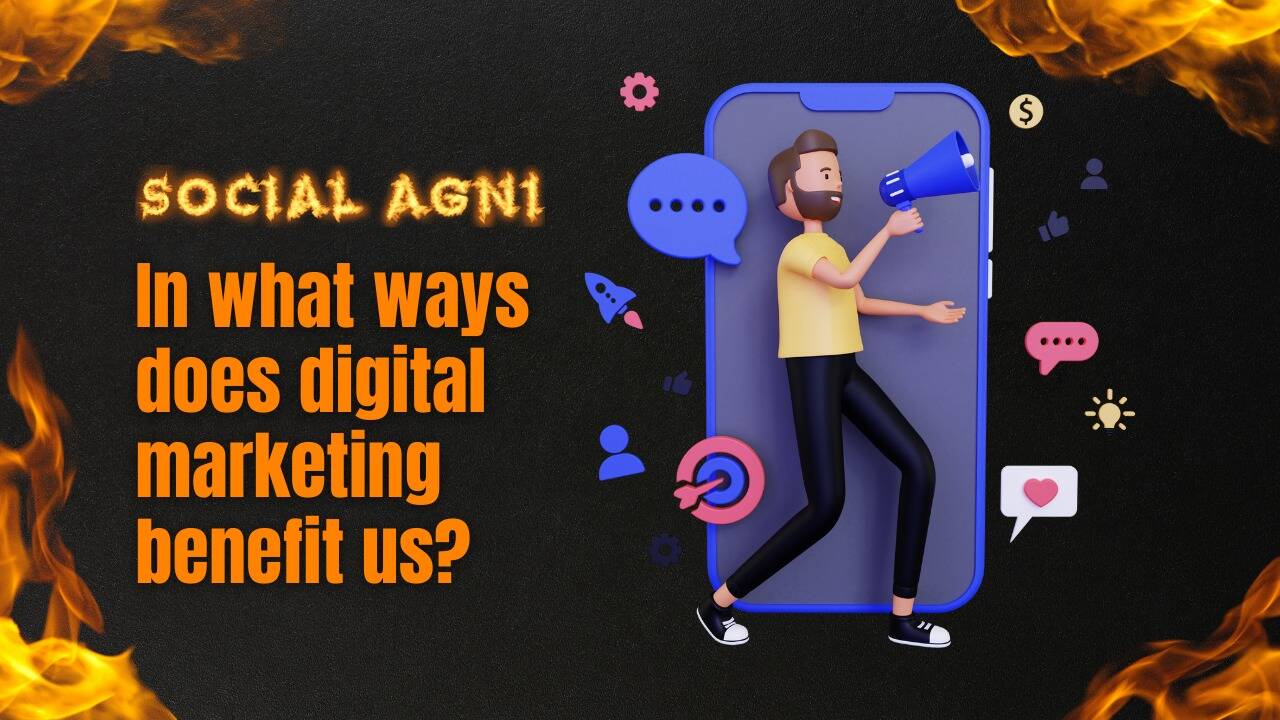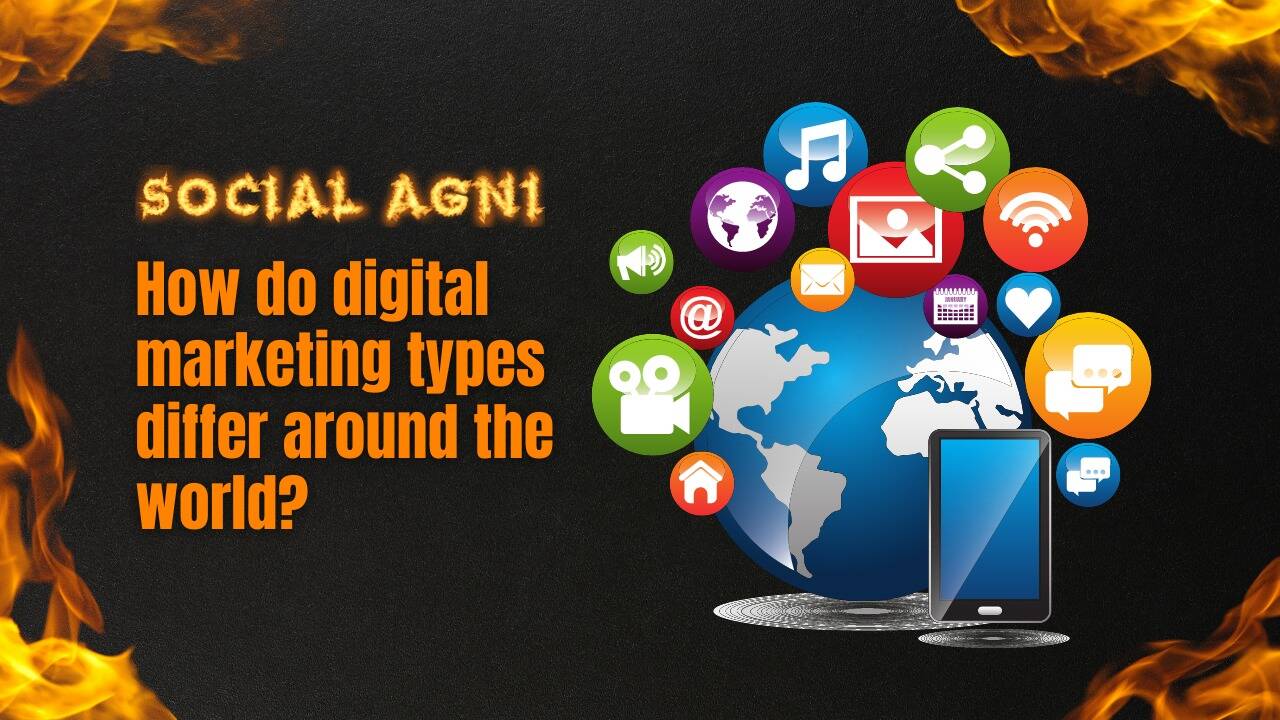Businesses today use digital marketing to reach their target audience and flourish. Digital marketing can reach a large online audience, build brand awareness, and generate leads. Digital marketing has many advantages, but its drawbacks—often overlooked—must also be considered. This essay explores digital marketing’s drawbacks to illuminate its dark side. Digital marketing has negatives, including privacy issues, data abuse, information overload, and customer fatigue. Understanding and tackling these drawbacks helps firms navigate the digital world and reduce risks. Digital marketing privacy is a major issue. Consent and data protection emerge as firms collect user data. Targeted advertising, data breaches, and identity theft can result from misusing this data. As people become aware of these hazards, they want tougher rules and transparent data practices. Digital marketers also struggle with online information overload. Marketing communications from multiple businesses might overwhelm customers. Marketers lose customers due to overexposure to ads, emails, and social media. Ad blockers and ad avoidance are another digital marketing drawback. Browser extensions and banner ad ignoring have helped consumers block bothersome adverts. This makes reaching and engaging target audiences difficult for enterprises. Digital marketing also lacks personal connection and trust-building potential. Online advertisements and brand authenticity can make it hard to build trust. Businesses must work harder to build trust and loyalty without a personal connection. Online platforms can also impact brand reputation. Negative reviews may spread quickly, damaging a brand’s reputation and financial line. Online reputation management is crucial for businesses. Digital marketing further worsens the digital divide and accessibility difficulties. Many people have internet connection, yet they may lack the means or abilities to fully participate in the digital world. This makes reaching various audiences difficult for firms and highlights the need of digital marketing inclusion. 1. Privacy Concerns and Data Misuse Consumers and companies are concerned about privacy in the digital age. Digital marketing uses personal data to target ads and customise experiences. This technique presents serious privacy and data abuse issues. Digital marketers are concerned about collecting personal data without consent. Users are ignorant of how much data firms gather and utilize. Lack of openness erodes confidence and poses data gathering ethics problems. Digital marketing also faces data abuse. If not safeguarded, names, email addresses, surfing history, and sensitive data might be stolen. Identity theft, financial fraud, and illegal account access might result. User data-targeted advertising presents privacy problems. Personalization may improve user experience but sometimes seem intrusive and exploitative. Knowing that their internet actions are continually scrutinized may make consumers feel out of control over their data. The EU’s General Data Protection Regulation (GDPR) reflects rising data privacy concerns. These policies provide individuals more control over their data and make firms accountable for appropriate data handling. Businesses must emphasize openness and consent when collecting and using personal data to address privacy concerns. Protecting sensitive data requires encryption, secure storage, and access controls. Businesses could also use privacy-by-design to include privacy into their digital marketing efforts. This includes clear privacy rules, opt-in/opt-out methods, and express consent before collecting and utilizing personal data. Businesses may build customer confidence by emphasizing privacy and using ethical data practices. Consumer privacy protects rights and boosts brand trust. Digital marketing’s biggest drawbacks are privacy and data abuse. Consumers should be concerned about the gathering and use of personal data without authorization, data breaches, and targeted advertising. Businesses must prioritize openness, consent, and data responsibility to counteract these disadvantages. They can create trust, strengthen consumer relationships, and manage the changing digital marketing landscape while preserving user privacy. 2. Information Overload and Consumer Fatigue Daily information and marketing messages overwhelm customers in the digital era. Digital marketers struggle with information overload, which may weary consumers and reduce campaign efficacy. Digital channels and platforms provide businesses several ways to contact their target audience. Brands are finding it harder to stand out in a sea of content and marketing communications. Information overload happens when people are overwhelmed with information. Thus, internet material may overwhelm, fatigue, and annoy customers. This might cause “content shock,” which desensitizes people to marketing messaging. Consumer weariness results from information overload and continual marketing. Consumers become tired of excessive advertising, emails, social media postings, and sponsored material. Ad blindness can result from weariness. Digital marketers must consider information overload and customer fatigue. Their well-crafted words may not be heard. Traditional marketing methods that interrupt and repeat might increase customer weariness and lower brand engagement. Digital marketers must focus quality over quantity to avoid information overload and customer fatigue. Some ideas: Personalization: Tailor marketing to individual requirements. Relevant content helps companies stand out and grab consumers’ attention. Targeted Segmentation: Segment the target audience by demographics, habits, and preferences. This enables more targeted and tailored messaging. Stuff Curation: Instead of bombarding consumers with stuff, curate high-quality, relevant content. This builds brand trust and credibility. Optimal Timing: Optimize marketing communication timing and frequency. Understanding customer engagement patterns helps reduce tiredness. Diversified platforms: Use many digital platforms to reach your audience. Diversify your marketing plan to reach customers where they are most engaged and responsive. User Experience: Use UX design to make digital marketing materials easy to use. User satisfaction reduces weariness and boosts engagement. Digital marketers may overcome information overload and consumer weariness by using these methods to create more meaningful and engaging customer experiences. Finally, information overload and customer tiredness hurt digital marketing. Desensitization, lower engagement, and bad brand views can result from excessive material and promotion. Businesses may overcome these hurdles and develop more meaningful audience relationships by prioritizing personalisation, targeted segmentation, content curation, appropriate timing, diverse channels, and better user experience. 3. Ad Blockers and Ad Avoidance Ad blockers and ad avoidance have become a major issue for digital marketers in an age where digital advertising is important to marketing efforts. Digital marketing initiatives are being hampered by consumers blocking web ads. Ad Blockers Software or browser extensions that block website advertisements. These programs prevent ad scripts, banners, and pop-ups to simplify and ad-free browsing. Digital marketers have a challenge
Affiliate marketing success depends on landing pages. Affiliate marketers need high-converting landing pages in 2023 to stay ahead. This comprehensive article covers the 2023 affiliate marketing landing page design. Start with affiliate marketing landing pages. Landing pages introduce customers to products and services. They streamline the user experience and bring customers to one offer or CTA, increasing conversion rates. Landing pages help affiliate marketers communicate their products’ USPs and motivate buyers. Affiliate landing pages are beneficial. These pages allow marketers to tailor their messaging and design to their target audience’s pain points. Personalizing and engaging prospects may boost conversion rates. Landing pages disclose user behavior and campaign efficacy, helping marketers improve. 2023 affiliate marketers must study their target market to create effective landing pages. Understanding their audience’s needs wants, and pain areas help marketers generate compelling content and design. Marketers may find best practices, unique value propositions, and market gaps by analyzing competitors’ landing pages. Landing page optimization needs keyword research. Landing page keywords may improve search engine rankings, organic traffic, and conversions. Landing page content should match keywords to attract the right audience and produce quality leads. Affiliate marketers must prioritize landing page design and structure. A layout and format that fits marketing goals and target audience preferences can improve user experience. Pictures and visuals may help visitors generate a strong first impression. Marketers must consider landing page loading speed in 2023. People want quick-loading landing pages. Slow pages annoy visitors and harm SEO. Image optimization, code minification, and CDNs accelerate page loads for marketers. Writing conversion-boosting landing page content is next. Headlines can attract customers. The landing page should highlight the affiliate product’s benefits and features to attract buyers. Strategically positioning CTAs on the website will persuade visitors to buy, subscribe, or download. SEO optimized landing pages and search engine rankings. Marketers add keywords to landing page URLs, meta tags, and headers. 1. Understanding the Role of Landing Pages in Affiliate Marketing Landing pages power effective affiliate marketing operations. Landing pages must be understood in the affiliate marketing ecosystem to be completely utilized. This section defines landing pages, their purpose, and their benefits to affiliate marketers. A. Landing Pages: Definition and Use Landing pages, often called destination pages or lead capture pages, are separate web pages meant to convert visitors. Landing pages are designed to direct visitors to a specific call-to-action (CTA). Landing pages help convert visitors into buyers, subscribers, or downloaders. Landing pages connect affiliate marketers to their target audiences. They help advertisers to send a targeted message, demonstrate the product or service’s value, and urge visitors to take action. B. Affiliate Marketers’ Landing Page Advantages Increased Conversion Rates: Landing pages are optimized to turn visitors into customers or leads. Landing pages outperform conventional website pages by offering a clear message, reducing distractions, and bringing readers to a compelling CTA. Enhanced User Experience: Landing pages improve user experience. They reduce clutter, simplify navigation, and provide visitors with the information they need to decide. Landing pages improve customer happiness and engagement by providing a smooth, straightforward experience. Targeted Messaging and Personalization: Landing pages allow affiliate marketers to customize their messaging to their target audience’s interests, preferences, and pain areas. Marketers can engage with people, resonate emotionally, and drive conversions by tailoring content to their requirements. Data and Insights: Landing pages provide exact campaign tracking and assessment. Marketers may utilize analytics solutions to track user activity, conversion rates, bounce rates, and other metrics. These insights optimize landing page performance. Increased Relevance and Ad Quality Score: Advertising systems give landing pages with relevant content better quality scores. This improves ad placement, visibility, and advertising costs for affiliate marketers. Affiliate marketing efforts start with landing pages. Affiliate marketers may boost their promotions, attract targeted visitors, and meet conversion targets by using them. We will discuss target market research for landing pages in the following part to help marketers design engaging content. 2. Conducting Target Market Research for Landing Pages Affiliate marketing landing pages require detailed target market analysis. Understanding your target audience, their goals, preferences, and pain points can help you develop landing pages that convert. This section covers target market research and examining rivals’ landing pages to acquire an edge. A. Determining Your Audience’s Needs Demographic Analysis: Determine your target audience’s age, gender, geography, income, and interests. This information will help you customize your landing page. Psychographic Analysis: Understand your audience’s motives, values, beliefs, and goals. Understanding their emotional triggers and desires can help you create engaging communications. Pain Points and Challenges: Determine what your affiliate product or service can address for your target audience. This lets you showcase your offering’s benefits and solutions, making it a valued solution. B. Examining Competitors’ Landing Pages and Strategies Competitors: Find your top affiliate marketing competitors. Find those marketing comparable items or targeting a similar audience. Landing Page Analysis: Analyze your rivals’ landing pages to learn their strategies, design, content, and CTAs. Note their strengths, shortcomings, unique value propositions, and holes you may exploit. User Experience Analysis: Assess rivals’ landing pages. Consider information flow, navigation, load times, and design aesthetics. Improve your landing page user experience. C. Keyword Research for Landing Page Optimization Keyword Research: Find relevant, high-intent affiliate keywords. Find high-volume, low-competition keywords utilizing Google Keyword Planner, SEMrush, or Ahrefs. Keyword Integration: Strategically integrate keywords into landing page content. Optimize page names, headers, meta tags, and body text for SEO and organic traffic. Long-tail Keywords: Target particular user intent or inquiries. These keywords have reduced competition and greater conversion rates. Create content that answers long-tail inquiries and informs people. By researching your target market, competition, and keywords, you can build landing pages that meet your audience’s demands. We will learn how to develop high-converting landing pages in the following part. 3. Designing High-Converting Landing Pages Affiliate landing pages depend on design. A beautiful, user-friendly design may attract visitors, improve their experience, and boost conversions. This section discusses landing page design best practices. A. Selecting a Good Landing Page Format Single
Pay-Per-Click (PPC) advertising is a strong tool for businesses to reach their target audience and create results in digital marketing. Businesses need strong digital strategies to keep ahead of the competition and change customer behavior. PPC advertising provides instant visibility, accurate audience targeting, and measurable results. Pay-Per-Click (PPC) advertising charges advertisers per click. PPC lets companies buy website visitors, unlike organic search engine optimization (SEO). PPC advertisements can appear on SERPs, social media, websites, and online advertising networks. PPC is crucial to digital marketing. It gives businesses fast visibility and results. PPC advertisements appear at the top of search engine results pages within hours of campaign creation, unlike traditional marketing approaches that take time. Instant visibility boosts website traffic and client acquisition. PPC advertising may accurately target certain populations. Demographics, hobbies, and search activity let advertisers target their ideal consumers. Businesses may boost advertising efficiency by targeting the correct audience at the right moment. This tailored method guarantees that advertising is shown to the most probable customers, improving conversions and revenues. PPC advertisements are also affordable and adaptable. Advertisers set daily or monthly budgets. PPC lets businesses pay only when their advertisements are clicked, unlike traditional advertising tactics that demand large upfront commitments. Pay-per-click advertising is cost-effective for businesses of all sizes since it links advertising costs to campaign results. PPC advertising performs analytics, fast results, and exact audience targeting. Advertisers may track clicks, impressions, conversions, and ROI. These insights help companies make data-driven decisions, optimize campaigns, and improve advertising tactics. In conclusion, digital marketing relies on PPC advertising, which benefits firms. PPC helps businesses reach their target audience with instant results, customized advertising, and cost-effective budgeting. In today’s competitive digital marketplace, PPC may help businesses boost their online presence, acquire clients, and reach their marketing goals. What is PPC in Digital Marketing? A. Definition of PPC PPC is an online advertising approach where marketers pay per click. It buys website views instead of obtaining them naturally. PPC advertisements appear on SERPs, social media, websites, and online advertising networks. B. How PPC works PPC campaigns are keyword-targeted. Advertisers bid on product-related keywords. The search engine shows relevant advertising for such terms. Quality and bid amount decide on ad position. C. PPC’s importance in digital marketing: PPC is crucial for several reasons. It gives firms rapid visibility and effective audience reach. PPC advertising may reach potential clients immediately, unlike other marketing tactics that take time. PPC also lets companies target advertising by demographics, interests, and search activity. This customized method shows adverts to people most likely to be interested in the items or services. Businesses may maximize advertising and sales by targeting the appropriate audience at the right moment. PPC planning and expense control flexibility is other benefits. Advertisers create daily or monthly budgets based on their finances. PPC is cost-effective since marketers only pay when someone clicks on their adverts. This helps companies maximize spending and ROI. PPC campaigns can also inform marketing tactics. Advertisers may track clicks, impressions, conversions, and ROI. Businesses may use data to make choices, spot patterns, and enhance their advertising campaigns. PPC is a potent digital marketing technique. It gives firms instant visibility, precision targeting, budget management, and important data. Businesses may improve their online presence, produce quality leads, and meet their marketing goals in today’s competitive digital marketplace by using PPC. Key Benefits of PPC Advertising 1. Immediate Results and Greater Visibility as a Benefit Instantaneous results and enhanced visibility are two of the main advantages of PPC advertising. PPC advertisements may be immediately launched and reach the top of search engine results pages (SERPs) within hours, in contrast to organic search engine optimization (SEO), which takes time to establish ranks. This rapid exposure guarantees that potential buyers will see your company clearly, improving the likelihood of clicks, website traffic, and conversions. 2. Targeted Advertising for Accurate Audience Reach PPC enables companies to precisely target their advertisements so that they reach the right audience. Advertisers may target particular client profiles with their ads by using demographic targeting, keyword targeting, and audience segmentation. Your adverts will be more relevant and have a greater chance of being seen by those who are actively looking for comparable goods and services thanks to this focused approach. You may dramatically increase the efficiency and efficacy of your advertising efforts by addressing the appropriate audience at the right moment. 3. Cost-Effective and Flexible Budgeting The third benefit, cost-effective and flexible budgeting, is available to businesses of all sizes through PPC advertising. PPC works on a pay-per-click approach as opposed to conventional advertising strategies, which demand substantial upfront commitments. This ensures that your budget is used to fund genuine engagement with your target audience because you only pay when someone clicks on your advertising. Additionally, PPC systems provide customizable budgeting capabilities that let you establish daily or monthly expenditure caps by your advertising objectives and available funds. 4. Measurable and Trackable Performance PPC advertising offers quantifiable and trackable performance indicators, which is one of its many key benefits. You can track important metrics like clicks, impressions, conversions, click-through rates (CTRs), and return on investment (ROI) using the extensive analytics and reporting capabilities provided by PPC systems. These insights provide you the ability to assess the success of your campaigns, pinpoint areas for development, and make data-driven choices that will optimize your advertising approach. 5. Increased Brand Awareness and Exposure PPC advertisements not only immediately increase traffic to your website but also help to boost brand awareness and visibility. Your target audience will become more familiar with your business when your adverts frequently show up in pertinent search results, social media feeds, or websites. Even if consumers don’t initially click on your advertising, the recurring exposure can still make an impact and result in conversions or brand interactions down the road. 6. Advantage in Search Engine Rankings Competition Businesses may obtain a competitive edge in search engine results by using PPC advertising. Even if your organic rankings are not yet optimized,
In the ever-evolving world of advertising, expertise of your target audience is critical for success. One effective manner to advantage deep insights into your customers is by creating buyer personas. Buyer personas are fictional representations of your ideal customers that assist you understand their needs, possibilities, and behaviors. By growing comprehensive customer personas, you can tailor your advertising strategies, products, and offerings to fulfill the specific wishes of your target audience. In this article, we can talk ten critical things to not forget when growing buyer personas, in conjunction with a pattern to guide you through the process. Conduct Market Research To create powerful customer personas, it is crucial to start with complete market research. This includes studying applicable demographic records, psychographic information, and behavioral patterns of your audience. Look into factors which include age, gender, region, income degree, education, and occupation. By informing the makeup of your audience, you could gain insights into their alternatives, conduct, and motivations. Interview Existing Customers One of the great approaches to accumulate valuable insights is with the aid of immediately attractive people together with your existing customers. Conduct surveys or interviews to recognize their reviews, challenges, and motivations. Ask open-ended questions that delve into their ache points, motives for deciding on your products or services, and their universal satisfaction. Their remarks can offer deep insights into what attracts and retains clients, permitting you to refine your customer personas. Identify Goals and Challenges Your consumer personas need to align with the goals and demanding situations your clients face on the subject of your products or services. What are they trying to reap? What limitations do they encounter? By information their aspirations and ache factors, you can position your services as solutions that address their particular wishes. This alignment will help you create centered advertising messages and strategies that resonate with your target audience. Segment Your Audience Not all customers are the same, and segmenting your target audience is key to developing accurate and effective consumer personas. Identify similarities in demographics, behaviors, and choices to create wonderful segments within your target market. For example, you may have specific consumer personas for young specialists in search of profession growth and retired people searching out amusement activities. This segmentation enables you to tailor your marketing efforts to unique client organizations and create personas which can be truly representative. Use Empathy to Understand Motivations Developing empathy is vital when growing buyer personas. Put yourself in your clients’ shoes and try to understand their motivations. Consider their aspirations, fears, goals, and emotional triggers. By information on their underlying emotions and psychological drivers, you can create buyer personas that correctly replicate their needs and wants. This empathetic technique will assist you establish a deeper reference to your target audience and force extra effective marketing campaigns. Outline Persona Attributes Once you have accumulated records and insights, it’s time to create an in-depth profile for every client character. Start with simple demographics along with age, gender, profession, profits stage, schooling, pastimes, and interests. However, it’s essential to dive deeper and appear beyond surface-degree characteristics. Consider their values, beliefs, attitudes, and lifestyle alternatives. Understanding those attributes will enable you to create extra nuanced and realistic buyer personas that resonate along with your target market on a deeper level. Develop Personal Narratives To carry your buyer personas to life, go past simply list attributes and create narratives around their lives. Develop a story that comprises their historical past, motivations, challenges, and the way your product or service suits their journey. Give them names and visualize their each day’s workouts, aspirations, and ache factors. This narrative method humanizes your personas, making them less difficult to apprehend and relate to to your advertising team and different stakeholders. Include Buying Preferences Understanding how your buyer personas favor to engage with brands and make shopping decisions is crucial for crafting effective advertising techniques. Do they depend on online research, are looking for recommendations from peers, or opt for in-person consultations? Are they active on social media systems or do they choose traditional channels? Knowing their preferred conversation channels and buying behaviors allows you to align your advertising efforts and tailor your messages as a result, growing the possibilities of engagement and conversions. Align with Sales and Customer Service Teams Collaboration with your income and customer service teams is precious when creating customer personas. These groups have direct interactions with clients and own first hand expertise in their ache factors, objections, and often requested questions. Tap into their expertise and accumulate. insights to refine your client personas. They can offer valuable information on customer possibilities, objections, and shopping for styles. By aligning with those groups, you may make sure that your buyer personas correctly reflect the real-world stories of your customers, leading to extra effective marketing techniques and improved consumer pride. Regularly Update and Refine Buyer personas are not static entities; they must evolve along your business and adapt to changing market dynamics. It is crucial to frequently revisit and refine your client personas to make sure their accuracy and relevance. Stay attuned to marketplace tendencies, conduct new studies, and integrate new insights into your personas. Customer preferences and behaviors can also shift over the years, and with the aid of retaining your personas updated, you may keep tailoring your marketing efforts and live ahead of the competition. Conclusion Creating consumer personas is a vital step for any commercial enterprise aiming to recognize and have interaction with its target market efficiently. By thinking about those ten important factors, inclusive of carrying out marketplace studies, interviewing clients, segmenting your audience, and constantly refining your personas, you could expand comprehensive and accurate representations of your best customers. Remember that consumer personas are not static; they must evolve along your commercial enterprise and reflect the converting needs and choices of your target market. With well-described buyer personas, you could tailor your advertising efforts to resonate along with your customers, driving better consequences and building stronger relationships along with your target marketplace.
E-commerce has revolutionized the way human beings purchase and sell merchandise. It has come to be one of the most essential channels for groups to attain their audience. However, with the upward thrust of e-commerce, the competition has become more extreme, and corporations need to rent powerful marketing techniques to stand out in the market. In this article, we will speak about everything you want to recognize about e-commerce advertising, from understanding your audience to the latest advertising trends. E-commerce has been growing at a superb tempo during the last decade, and it shows no signs of slowing down. With increasingly humans turning to online buying, agencies have been able to reach clients everywhere in the global. However, with so much opposition, agencies want to appoint effective e-commerce advertising and marketing techniques to stand out within the market. In this article, we will explore the entirety you need to recognize e-commerce advertising, consisting of the way to apprehend your target audience, create compelling content material, and stay up-to-date with the modern advertising and marketing tendencies. Understanding Your Target Audience Understanding your target market is critical for the fulfillment of your e-commerce marketing method. This includes figuring out who your customers are, what they’re looking for, and how they behave. To acquire these records, you could use a variety of tools and strategies which includes surveys, awareness businesses, and consumer analytics. Customer analytics can offer insights into consumer behavior, alternatives, and demographics. For example, you may use statistics which includes page views, click on-through quotes, and leap rates to gain a better information of what’s working and what wishes to be improved for your internet site. Surveys and attention companies assist you to benefit deeper insights into your clients’ motivations, alternatives, and ache points. These records can be used to tell your marketing approach, from the forms of merchandise you provide to the way you communicate together with your customers. Creating Compelling Content Creating compelling content material is essential for engaging clients and using conversions. Your content should be informative, enticing, and applicable for your target market. This can include product descriptions, pix, videos, and purchaser evaluations. Product descriptions must be clear and concise, highlighting the capabilities and advantages of the product. High-satisfactory snap shots and videos can also assist clients to visualize the product and make informed shopping decisions. Customer evaluations can provide social proof and assist to construct belief with capacity clients. Additionally, it’s far critical to optimize your content for engines like google with the aid of which include relevant keywords and meta descriptions. This will help your internet site to rank better in search results and entice extra organic visitors. Leveraging Social Media Social media has become a powerful tool for e-commerce advertising and marketing. Platforms which include Facebook, Instagram, and Twitter can be used to attain a big target audience and engage with clients in actual-time. However, it is important to create a social media strategy that is tailored to your audience. This includes figuring out the structures that your clients are most energetic on, creating enticing content that resonates with them, and using capabilities together with paid marketing to attain a much wider target market. Social media also can be used to construct a community around your logo, via encouraging customers to share their stories, imparting customer support, and showcasing person-generated content material. Staying Up-to-Date with the Latest Marketing Trends E-trade advertising is continuously evolving, and it’s important to stay up-to-date with the contemporary traits and pleasant practices. One of the cutting-edge trends in e-trade advertising is personalization, which involves tailoring the customer experience to every individual. This can encompass personalized product recommendations, personalized emails, and personalized touchdown pages. Another fashion is influencer advertising, which includes partnering with social media influencers to promote your brand and products. Influencers can assist to construct emblem focus and credibility, and can be specifically effective for reaching more youthful audiences. Chatbots are every other emerging fashion in e-trade advertising and marketing, which may be used to offer immediate customer support and improve the client experience. Optimizing for Mobile With the growing recognition of cellular devices, it is critical to optimize your internet site and advertising efforts for cellular users. This consists of the usage of responsive layout to make sure that your website is accessible on all gadgets, in addition to optimizing your content material and advertising for cellular monitors. Mobile optimization can assist to enhance the consumer’s enjoyment and boom engagement, in addition to driving more conversions from cellular customers. Using Email Marketing Email marketing is an effective device for e-commerce groups, offering a manner to attain customers without delay and promote your products and services. Effective electronic mail advertising and marketing includes growing attractive and personalized content material, segmenting your email list based totally on client alternatives and conduct, and optimizing your emails for deliverability and open costs. Email marketing also can be used to force repeat enterprise and build purchaser loyalty thru centered promotions and personalized offers. Implementing a Referral Program Referral advertising is a price-effective manner to accumulate new customers and build emblem awareness. By incentivizing your existing clients to refer their buddies and own family, you may tap into their social networks and reach new audiences. Referral applications can be carried out through numerous channels, such as e-mail, social media, and on-web site pop-ups. By rewarding each the referrer and the referred customer, you could inspire extra referrals and growth purchaser loyalty. Using Paid Advertising Paid marketing can be an effective manner to reach a wider target audience and force extra site visitors to your website. This can include the usage of structures which includes Google AdWords and Facebook Ads to target unique keywords and demographics, in addition to retargeting commercials to reach customers who have previously visited your internet site. Paid marketing can be high priced, however by being cautiously focused on your ads and optimizing your campaigns, you can obtain an excessive return on funding. Measuring and Analyzing Results Measuring the
The Google Search Console, previously named as Google Webmaster Tools, is a no-cost online service offered by Google to aid website owners and webmasters in overseeing and managing their website’s appearance in Google’s search results. It provides tools to help webmasters track their site’s performance, identify issues, and fix problems that may prevent their site from ranking well in search results. In this article, we will discuss in detail what the Google Search Console is and how it can be useful for website owners. The Google Search Console is a powerful tool that provides website owners and webmasters with valuable insights into their site’s performance in Google search results. One of the most important features of the console is the ability to track search traffic. This feature allows webmasters to see which queries are driving traffic to their site, which pages are getting the most clicks, and which keywords are being used to find their site. This information can be used to optimize content and improve the user experience on the site. Furthermore, the Google Search Console provides webmasters with tools to monitor and improve their site’s technical performance. For example, webmasters can use the console to monitor their site for crawl errors, broken links, and other issues that may be impacting the site’s performance in search results. The console also provides tools to help webmasters submit sitemaps, test robots.txt files, and verify site ownership. In addition, the console helps webmasters identify and fix issues that may be preventing their website from ranking well in search results. One such issue is duplicate content. The console provides a report of pages that have duplicate content, allowing webmasters to identify and fix the issue. Webmasters can also use the console to identify pages on their site that are not being indexed by Google. This can be caused by a number of issues, such as problems with the site’s robots.txt file, and can be fixed by making changes to the site’s settings in the console. Another valuable feature of the Google Search Console is the ability to monitor a website’s backlink profile. Backlinks are links from other websites that point to a website. Google uses backlinks as a signal of a website’s authority and relevance. By monitoring a website’s backlink profile, webmasters can identify potential opportunities for link building, as well as ensure that the site is not being penalized for low-quality or spammy backlinks. The console also provides webmasters with insights into how their site is performing on mobile devices. With the increasing use of mobile devices to access the internet, it is essential for websites to be optimized for mobile users. The console provides webmasters with data on their site’s mobile usability, as well as tools to help them optimize their site for mobile users. This includes identifying pages that are not mobile-friendly and providing suggestions for improvement. Moreover, the Google Search Console helps webmasters monitor their site’s security. The console provides alerts if Google detects any security issues on a website, such as malware or phishing attacks. This can help webmasters identify and fix security issues before they become a serious problem. The console also provides data on how often a site is appearing in Google’s rich results. Rich results are enhanced search results that include additional information, such as reviews, recipes, and events. By optimizing their site’s content for rich results, webmasters can improve their site’s visibility and attract more traffic from Google search results. The console also provides webmasters with valuable insights into their site’s performance in Google’s local search results. With the increasing importance of local search, it is essential for businesses to optimize their site for local search queries. The console provides data on how often a site is appearing in local search results, as well as insights into how users are interacting with the site in local search. Webmasters can use this information to optimize their site for local search and attract more traffic from local search queries. Another useful feature of the Google Search Console is the ability to identify and fix issues with a site’s structured data. Structured data is a way of adding additional information to a website’s pages, such as product information or event details. By using structured data, webmasters can improve their site’s visibility in Google search results and attract more traffic to their site. Furthermore, the console provides webmasters with the ability to monitor their site’s performance in Google search results in different countries and languages. This is especially important for websites that have a global audience. By monitoring a site’s performance in different countries and languages, webmasters can identify opportunities to optimize their site for specific regions and attract more traffic from those areas. Lastly, the Google Search Console provides webmasters with tools to optimize their site’s metadata and content. Metadata is the information that appears in search results, such as the title and description of a page. By optimizing metadata, webmasters can improve their site’s visibility in search results and attract more clicks. The console provides a report of pages with missing or poorly written metadata, allowing webmasters to identify and fix the issue. Additionally, the console provides data on how often a site’s pages are appearing in search results, as well as the average position of those pages. This information can be used to optimize content and improve a site’s ranking in search results. Conclusion The Google Search Console is a powerful tool that can help website owners monitor and maintain their site’s performance in Google search results. By providing data and insights into search traffic, technical issues, and backlink profiles, the console can help webmasters improve their site’s SEO and ensure that it is performing well in search results. If you are a website owner, it is highly recommended that you take advantage of this free tool to help you optimize your site for search engines and improve your overall online presence. FAQs: References:
SEO is a crucial element in digital marketing that should not be overlooked. Every day, millions of people search for information, products, and services on search engines like Google, Bing, and Yahoo. SEO involves enhancing a website to achieve a better position in the search engine results pages (SERPs) for keywords that are relevant. However, there are many myths about SEO that can mislead website owners and hurt their online visibility. In this article, we will debunk the 10 biggest SEO myths you should never believe. Myth 1: SEO is a one-time task Many website owners mistakenly believe that SEO is a one-time task that they can do and then forget about. However, SEO is a long-term process that requires ongoing attention and maintenance. This is because search engines are constantly updating their algorithms and ranking factors, so website owners need to keep up with the latest trends and best practices in order to maintain their online visibility. Moreover, SEO is not a static process. It requires a lot of experimentation, testing, and refinement to achieve optimal results. Website owners need to monitor their website’s performance on search engine results pages (SERPs) and make adjustments as necessary to improve their rankings. This may involve updating content, building new backlinks, or improving website speed and user experience. Finally, SEO is not a one-size-fits-all solution. Different websites have different goals, audiences, and competitive landscapes. As a result, SEO strategies need to be customized to fit the unique needs of each website. This requires ongoing research and analysis to identify the most effective tactics for improving a website’s SEO. Myth 2: Keyword stuffing is an effective SEO strategy Some website owners believe that they can improve their SEO by stuffing their content with keywords. This strategy is no longer relevant and may have negative consequences for your SEO. Search engines are becoming increasingly sophisticated at detecting keyword stuffing and will penalize websites that engage in this practice. Keyword stuffing can also harm the user experience of a website. When content is stuffed with keywords, it can become difficult to read and understand, which can frustrate users and lead them to leave the site. This can ultimately harm a website’s bounce rate, which is a negative ranking factor. In addition, keyword stuffing can harm a website’s reputation and credibility. When content is clearly written for search engines rather than for users, it can appear spammy and untrustworthy. This can ultimately harm a website’s ability to attract and retain visitors, which can have a negative impact on its SEO in the long run. Myth 3: Social media has no impact on SEO While social media may not be a direct ranking factor, it can still have a significant impact on a website’s SEO. Social media can drive traffic to a website, increase brand awareness, and generate backlinks, all of which are important factors for SEO. When content is shared on social media, it can attract new visitors to a website who may not have otherwise discovered it. This can ultimately increase the website’s traffic and improve its visibility on search engines. Social media can also increase brand awareness by exposing a website to a wider audience and encouraging engagement and interaction with followers. Moreover, social media can also generate backlinks to a website, which are a key ranking factor for search engines. When content is shared on social media, it can be picked up by other websites and blogs, who may then link back to the original source. This can ultimately improve a website’s domain authority and increase its chances of ranking higher on SERPs. Myth 4: Paid advertising improves SEO rankings While paid advertising can help drive traffic to a website and increase brand awareness, it has no direct impact on SEO rankings. Paid advertising and SEO are two separate strategies that should be approached independently. Paid advertising can be a great way to drive traffic to a website, particularly in the short term. However, once the advertising campaign is over, the traffic will likely decrease. SEO, on the other hand, is a long-term strategy that can help a website attract organic traffic over time. Moreover, paid advertising does not improve a website’s domain authority or generate backlinks, both of which are important ranking factors for SEO. While paid advertising can be an effective way to supplement an SEO strategy, it should not be relied on as the sole means of improving a website’s online visibility. Myth 5: Link building is no longer important for SEO Link building has been a key part of SEO since the early days of search engines, and it remains an important factor today. However, the way in which link building is approached has changed over time. In the past, link building was often approached as a quantity over quality game. Website owners would focus on building as many backlinks as possible, regardless of the quality of the source or the relevance of the content. However, this approach is no longer effective and can actually harm a website’s SEO. Today, link building should be approached as a quality over quantity game. Website owners should focus on building high-quality backlinks from relevant, authoritative sources. This requires a lot of research and outreach to identify potential link opportunities and build relationships with other websites and bloggers. Myth 6: SEO is all about technical optimization While technical optimization is an important part of SEO, it is not the only factor that determines a website’s ranking on search engines. SEO is a multifaceted strategy that requires attention to a variety of factors, including content quality, user experience, and backlink profile. Content quality is one of the most important factors for SEO. Search engines are constantly looking for high-quality, informative, and engaging content that is relevant to the user’s search query. Websites that consistently produce high-quality content are more likely to attract organic traffic and improve their rankings on SERPs. User experience is another important factor for SEO. Search engines want to provide
In today’s digital age, digital marketing has become an essential aspect of a business’s marketing strategy. With the rise of technology and the internet, digital marketing has given businesses the ability to reach a broader audience and has become an integral part of the marketing mix. In this article, we will look at 13 facts that highlight the future scope of digital marketing and why it is worth considering as a career choice. The rise of e-commerce E-commerce has been growing at a rapid pace in recent years, and this trend is expected to continue in the future. With more people turning to online shopping for convenience and a wider selection of products, businesses need to focus on digital marketing to reach their target audience. This includes optimizing their online store for search engines, running targeted online advertisements, and utilizing social media to drive traffic to their site. E-commerce has become a multi-billion-dollar industry, and as a result, there is a high demand for digital marketing professionals who can help businesses reach their online customers effectively. Increased use of mobile devices With the rise of smartphones and other mobile devices, people are now spending more time online. In fact, mobile devices now account for over half of all internet traffic. As a result, businesses need to focus on mobile optimization and mobile-friendly marketing strategies to reach their target audience. This includes creating mobile-friendly websites, mobile apps, and mobile advertisements. Mobile marketing is a rapidly growing field, and businesses are in need of digital marketing professionals who can help them reach their customers on the go. Emergence of new technologies As technology continues to advance, new digital marketing technologies will emerge. This will provide businesses with new opportunities to reach their target audience and will require professionals with specialized skills to implement these strategies. For example, virtual reality and augmented reality technologies are being used to create immersive marketing experiences, and artificial intelligence and machine learning are being used to personalize marketing efforts and optimize campaigns. As new technologies emerge, there will be a growing demand for digital marketing professionals who have the skills to implement these innovative strategies. Importance of social media Social media is becoming increasingly important in the digital marketing landscape. Businesses need to have a strong presence on platforms like Facebook, Instagram, and Twitter to reach their target audience. This includes creating engaging content, running social media advertisements, and building relationships with customers through social media. Social media marketing is a rapidly growing field, and businesses are in need of digital marketing professionals who can help them reach their target audience and build their brand on these platforms. The growth of influencer marketing Influencer marketing has become an important part of the marketing mix, and this trend is expected to continue in the future. Businesses need to partner with influencers to reach their target audience and to promote their products and services. This includes partnering with bloggers, social media influencers, and celebrities to reach their target audience. Influencer marketing requires specialized skills, and businesses are in need of digital marketing professionals who can help them identify and partner with the right influencers to reach their target audience. The rise of video marketing Video is becoming an increasingly popular form of content, and businesses need to focus on video marketing to reach their target audience. This includes creating videos for social media, YouTube, and other platforms. Video marketing requires specialized skills, including videography, video editing, and scriptwriting. As video becomes a more important part of the marketing mix, there will be a growing demand for digital marketing professionals who have these skills. Importance of SEO Search engine optimization (SEO) is becoming increasingly important as businesses need to rank highly in search results to reach their target audience. SEO involves optimizing websites and online content to rank highly in search results and to reach their target audience. This includes keyword research, link building, and content creation. SEO is a complex field, and businesses are in need of digital marketing professionals who have the skills to optimize their online presence and reach their target audience through search engines. The growth of content marketing Content marketing is becoming an increasingly important part of the marketing mix, and businesses need to focus on creating valuable and relevant content to reach their target audience. This includes blog posts, infographics, and other forms of content that provide value to the target audience. Content marketing requires specialized skills, including writing, graphic design, and research. As content marketing becomes more important, there will be a growing demand for digital marketing professionals who have these skills. The rise of data-driven marketing Data-driven marketing is becoming increasingly important as businesses need to make informed decisions based on data to reach their target audience effectively. This includes gathering and analyzing data on customer behavior and preferences, and using this information to inform marketing efforts. Data-driven marketing requires specialized skills, including data analysis and marketing analytics. As businesses become more data-driven, there will be a growing demand for digital marketing professionals who have these skills. The growth of programmatic advertising Programmatic advertising is becoming an increasingly popular form of digital advertising, and businesses need to focus on programmatic advertising to reach their target audience. This includes using software to automate the purchasing and placement of digital advertisements. Programmatic advertising requires specialized skills, including data analysis and marketing automation. As programmatic advertising becomes more important, there will be a growing demand for digital marketing professionals who have these skills. The importance of user experience User experience (UX) is becoming increasingly important in the digital marketing landscape, and businesses need to focus on creating positive experiences for their target audience. This includes creating websites and online content that are user-friendly and easy to navigate, and using data and analytics to inform UX decisions. UX is a complex field, and businesses are in need of digital marketing professionals who have the skills to create positive experiences for their target audience. The need
Marketing is one of the most important aspects of running a business. It’s the process of creating and delivering messages that promote a product or service to consumers. And while there are many different marketing strategies, digital marketing is one of the most effective. In this article, we’re going to take a look at some of the ways digital marketing benefits us as business owners. What is Digital Marketing? Digital marketing is the process of creating, delivering, and managing content that engages customers and helps businesses achieve their objectives. It encompasses a wide range of activities, including the development and management of websites, search engine optimization (SEO), email marketing, social media marketing, and public relations. It is the use of digital technologies to create, deliver, and measure the results of marketing communications. Digital Marketing is the process of creating, managing and executing a marketing plan that uses electronic media such as email, websites, social media platforms and search engines. It is an essential part of modern business and has a number of benefits for businesses. Digital marketing can help businesses reach a wider audience with more relevant content. By using digital channels such as email and website, businesses can communicate with their customers on a personal level. This allows businesses to build trust and relationships with their customers, which can lead to increased sales. Additionally, digital marketing allows businesses to track the effectiveness of their campaigns through analytics tools such as Google Analytics. This information can help businesses make necessary changes to their marketing strategy if necessary. How Does Digital Marketing Benefit Us? Digital marketing is the practice of using digital technologies, such as the internet, to deliver marketing communications and reach out to customers. It has many benefits for businesses, including increased customer loyalty, brand awareness, and web traffic. Digital marketing can also help businesses track and measure their marketing activities and identify where they need to improve. Digital marketing can offer a number of advantages for businesses, both large and small. Some of the benefits of digital marketing include the following: Increased Reach and Audience Engagement: With digital marketing, businesses can reach a much wider audience than they could with traditional marketing methods. This means that your business can engage with a larger number of potential customers, increasing your chances of achieving success. Greater Efficiency and Improved Customer Retention rates: Digital marketing techniques allow businesses to target their ads more effectively, which means that you’re likely to reach more people with your message and keep them engaged longer. This leads to higher customer retention rates and increased revenue. Reduced Costs: Digital marketing is often more affordable than traditional marketing methods, which means that you can reach a wider range of customers without spending a lot of money. In addition, digital platforms make it easy to track the effectiveness of your campaigns so you can fine-tune them as needed. Increased Brand Loyalty: By engaging customers through digital channels, you can create a bond between your business and its consumers that’s hard to break. This makes it easier for customers to refer your company and promote your products to their friends, increasing your brand’s reach and popularity. Greater Flexibility: Digital marketing platforms are highly flexible, meaning that you can tailor them to the specific needs of your business. This allows you to create custom campaigns that are designed to reach your target audience in the most effective way possible. Increased Customer Engagement: Digital marketing can help you to engagement your customers in ways that’s hard to achieve with traditional marketing methods. For example, you can use digital platforms to create customer surveys and ask them questions about their experience with your product or service. This helps you to improve your customer service and increase loyalty towards your business. Increased Conversion Rates: Digital marketing techniques are often effective at converting leads into customers. This means that you can generate more revenue from your efforts by driving more people to your website or landing page. Increased Brand Awareness: Digital marketing can help to increase brand awareness, which can lead to increased sales and market share. Improved Website Traffic and Conversion Rates: By driving more people to your website, digital marketing can help to improve your web traffic and conversion rates. This means that you’re more likely to reach your target audience and generate leads that can be converted into customers. Increased Social Media Presence: Digital marketing platforms can help you to build a strong social media presence for your business. This can help you to connect with your target audience and promote your products and services to a wider audience. Increased Engagement with Customers: Digital marketing platforms can help you to engage with your customers in ways that’s hard to achieve with traditional marketing methods. For example, you can use digital platforms to create customer surveys and ask them questions about their experience with your product or service. This helps you to improve your customer service and increase loyalty towards your business. Increased Customer Loyalty: By engaging customers through digital channels, you can create a bond between your business and its consumers that’s hard to break. This makes it easier for customers to refer your company and promote your products to their friends, increasing your brand’s reach and popularity. Increased ROI: Digital marketing can often be more effective than traditional marketing methods at generating ROI. This means that you’re likely to achieve a higher return on your investment than you would with other methods. It helps to reach a large audience. Digital marketing can help businesses to reach a large audience through online platforms such as YouTube, Facebook, and Instagram. This allows them to connect with potential customers who may not have heard of them before. It increases sales. Digital marketing can help to increase sales by showing customers how purchasing products or services through digital channels can be more affordable than through other methods. This can encourage customers to make purchases from the business. It builds brand awareness. Digital marketing
It’s no secret that digital marketing is on the rise, and with good reason. Digital marketing can help you connect with your target audience in a way that traditional advertising simply can’t. However, there are certain types of digital marketing that are more popular in different parts of the world. In this article, we’ll take a look at the different digital marketing types and see how they differ around the world. Digital marketing in different countries Digital marketing in different countries is quite different. eMarketer conducted a study in 2016 that looked at how global digital marketing is changing and how it’s influencing the way businesses operate. The report found that global digital marketing is now dominated by programmatic advertising, which accounts for over 60% of all digital ad spending. Additionally, global social media spending continues to grow, with 52% of companies reporting increased spending on social media in 2016. In contrast, online advertising in Japan is dominated by banner ads that are typically around 150 pixels wide and 240 pixels high. These ads are usually placed on third-party websites or blogs and are often seen as intrusive because they take up a lot of space. In China, online advertising is mostly done through search engine optimization (SEO) techniques that focus on creating quality content so that website visitors will click through to relevant ads. By comparison, Spain focuses on display advertising, which is typically large rectangle or square ads that are displayed on the top or bottom of webpages. Finally, India relies heavily on email marketing to promote products and services to customers. Global digital marketing is changing rapidly, with programmatic advertising becoming the dominant form of digital advertising. Social media spending continues to grow, while online advertising in Japan remains dominated by banner ads. In China, SEO techniques are used to drive traffic to advertiser websites, while in Spain and India email marketing is dominant. Overall, the report found that global digital marketing is moving away from traditional advertising formats and focusing on more effective ways to reach customers. Different Digital Marketing Types There is no single answer to this question as digital marketing methods vary vastly around the world. However, some generalizations can be made about the different types of digital marketing practices used in different countries. a) One of the most common forms of digital marketing is called ‘paid search’. In this method, companies pay websites or search engines to display their ads on a relevant page. Paid search ads are often targeted towards people who have already expressed an interest in the product or service being offered. b) Another popular form of digital marketing is called ‘earned media’. This involves creating content that is highly engaging and shareable and then distributing it through channels such as social media, blogs, and email campaigns. The goal of earned media is to generate awareness and interest in a product or service before actually selling it. c) Another type of digital marketing is called ‘content marketing’. In content marketing, firms create valuable, informative content that they then share across their various channels (such as blog posts, social media posts, and email newsletters). The goal of content marketing is to create a relationship with their customers by providing valuable information and insights. While these are generalizations, they provide a snapshot of some of the most common types of digital marketing practiced around the world. Digital marketing around the world Digital marketing is an umbrella term that refers to all forms of marketing communication and activities that use digital technologies. The main types of digital marketing are online advertising, online customer service, online lead generation, online content marketing, and e-commerce. Online advertising: Online advertising is the most common form of digital marketing. It involves placing ads on websites or blogs. Online advertisers can choose from a variety of ad formats, including text ads, banner ads, and video ads. Online customer service: Online customer service is another type of digital marketing that uses technology to provide customers with solutions to their problems. Customers can contact customer service through email, phone, or live chat. Online lead generation: Online lead generation is a way to generate leads from potential customers who are interested in your product or service. You can generate leads by using online channels such as blogs, social media platforms, and email campaigns. Online content marketing: Online content marketing is a type of digital marketing that uses content to build relationships with customers and promote your products or services. You can create content for your website, blog, social media profiles, and email campaigns. E-commerce: E-commerce is a type of digital marketing that uses electronic systems to purchase goods and services. You can use e-commerce to sell your products and services online. Digital marketing is the use of digital technologies to create, manage, and deliver a message about a product or service. Digital marketing can be classified into three main categories: Online marketing Mobile marketing, and Social media marketing. Each category has its own specific set of strategies and tactics that are used to reach and engage customers. Online marketing includes web advertising, web search engine optimization (SEO), e-mail marketing, and pay-per-click (PPC) advertising. Web advertising is the most common type of online marketing and is used to generate traffic to a website. Web search engine optimization is a technique used to improve the ranking of a website in search engine results pages (SERPs). E-mail marketing is a form of online marketing that uses email messages to communicate with customers. Pay-per-click advertising is an online advertising method that allows companies to place ads on websites with a commission when a user clicks on the ad. Mobile marketing includes using mobile devices to access the internet. Mobile devices are often used to access online content, shop for products, and sign up for services. Social media marketing includes using social media platforms like Facebook, Twitter, LinkedIn, and Google+ to communicate with customers. Social media platforms are often used to share information about a product
